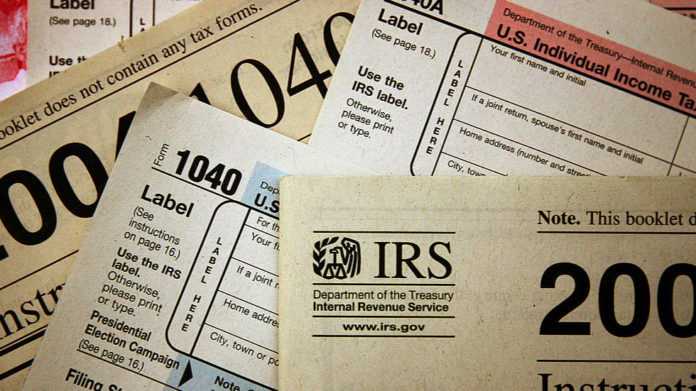The Internal Revenue Service (IRS) recently announced the annual inflation adjustments for more than 60 tax provisions for the tax year 2021, including the tax rate schedules and other tax changes.
The IRS Revenue Procedure 2020-45 PDF provides details about these annual adjustments.
Highlights of changes in Revenue Procedure 2020-45
The Consolidated Appropriation Act for 2020 increased the amount of the minimum additional tax for failure to file a tax return within 60 days of the due date.
Starting with returns due after Dec. 31, 2019, the new additional tax is $435 or 100 percent of the amount of tax due, whichever is less. This is an increase from $330. The $435 additional tax will be adjusted for inflation.
Last month, the IRS said it will resume issuing the balance due notices to taxpayers. The agency halted the issuance of the 500 series notice including CP501, CP503, and CP504 that informs taxpayers regarding their balance due.
The tax year 2021 adjustments described below generally apply to tax returns filed in 2022.
- The standard deduction for married couples filing jointly for the tax year 2021 will rise to $25,100, an increase of $300 from the prior year. For single taxpayers and married individuals filing separately, the standard deduction increases to $12,550 for 2021. This is up by $150, and for heads of households, the standard deduction will be $18,800 for the tax year 2021, again up by $150.
- The personal exemption for the tax year 2021 remains at 0, as it was for 2020. This removal of the personal exemption was a provision included within the Tax Cuts and Jobs Act.
- Marginal Rates: For tax year 2021, the top tax rate remains 37% for individual single taxpayers with incomes greater than $523,600 ($628,300 for married couples filing jointly). The other rates are:
- 35%, for incomes over $209,425 ($418,850 for married couples filing jointly);
- 32% for incomes over $164,925 ($329,850 for married couples filing jointly);
- 24% for incomes over $86,375 ($172,750 for married couples filing jointly);
- 22% for incomes over $40,525 ($81,050 for married couples filing jointly);
- 12% for incomes over $9,950 ($19,900 for married couples filing jointly).
- The lowest rate is 10% for incomes of single individuals with incomes of $9,950 or less ($19,900 for married couples filing jointly).
- For 2021, as in 2020, 2019, and 2018, there is no limitation on itemized deductions, as that limitation was eliminated by the Tax Cuts and Jobs Act.
- The Alternative Minimum Tax exemption amount for the tax year 2021 is $73,600 and begins to phase out at $523,600 ($114,600 for married couples filing jointly for whom the exemption begins to phase out at $1,047,200). The 2020 exemption amount was $72,900 and began to phase out at $518,400 ($113,400 for married couples filing jointly for whom the exemption began to phase out at $1,036,800).
- The tax year 2021 maximum Earned Income Credit amount is $6,728 for qualifying taxpayers who have three or more qualifying children. This is up from a total of $6,660 for the tax year 2020. The revenue procedure contains a table providing the maximum Earned Income Credit amount for other categories, income thresholds, and phase-outs.
- For the tax year 2021, the monthly limitation for the qualified transportation fringe benefit remains $270, as is the monthly limitation for qualified parking.
- For the taxable years beginning in 2021, the dollar limitation for employee salary reductions for contributions to health flexible spending arrangements remains $2,750. For cafeteria plans that permit the carryover of unused amounts, the maximum carryover amount is $550, an increase of $50 from taxable years beginning in 2020.
- For the tax year 2021, participants who have self-only coverage in a Medical Savings Account, the plan must have an annual deductible that is not less than $2,400, up by $50 from the tax year 2020; but not more than $3,600, an increase of $50 from the tax year 2020. For self-only coverage, the maximum out-of-pocket expense amount is $4,800, an increase of $50 from 2020. For the tax year 2021, for participants with family coverage, the floor for the annual deductible is $4,800, up from $4,750 in 2020; however, the deductible cannot be more than $7,150, up by $50 from the limit for the tax year 2020. For family coverage, the out-of-pocket expense limit is $8,750 for the tax year 2021, an increase of $100 from the tax year 2020.
- For the tax year 2021, the adjusted gross income amount used by joint filers to determine the reduction in the Lifetime Learning Credit is $119,000, up from $118,000 for the tax year 2020.
- For tax year 2021, the foreign earned income exclusion is $108,700 up from $107,600 for tax year 2020.
- Estates of decedents who die during 2021 have a basic exclusion amount of $11,700,000. This is up from a total of $11,580,000 for estates of decedents who died in 2020. A total increase of $120,000.
- The annual exclusion for gifts is unchanged at $15,000 for the calendar year 2021. This is as it was for the calendar year 2020.
- The maximum credit allowed for adoptions for the tax year 2021 (qualified adoption expenses) is up to $14,440. This is up from $14,300 for 2020.
—————————————-
[/subscribe_to_unlock_form]









